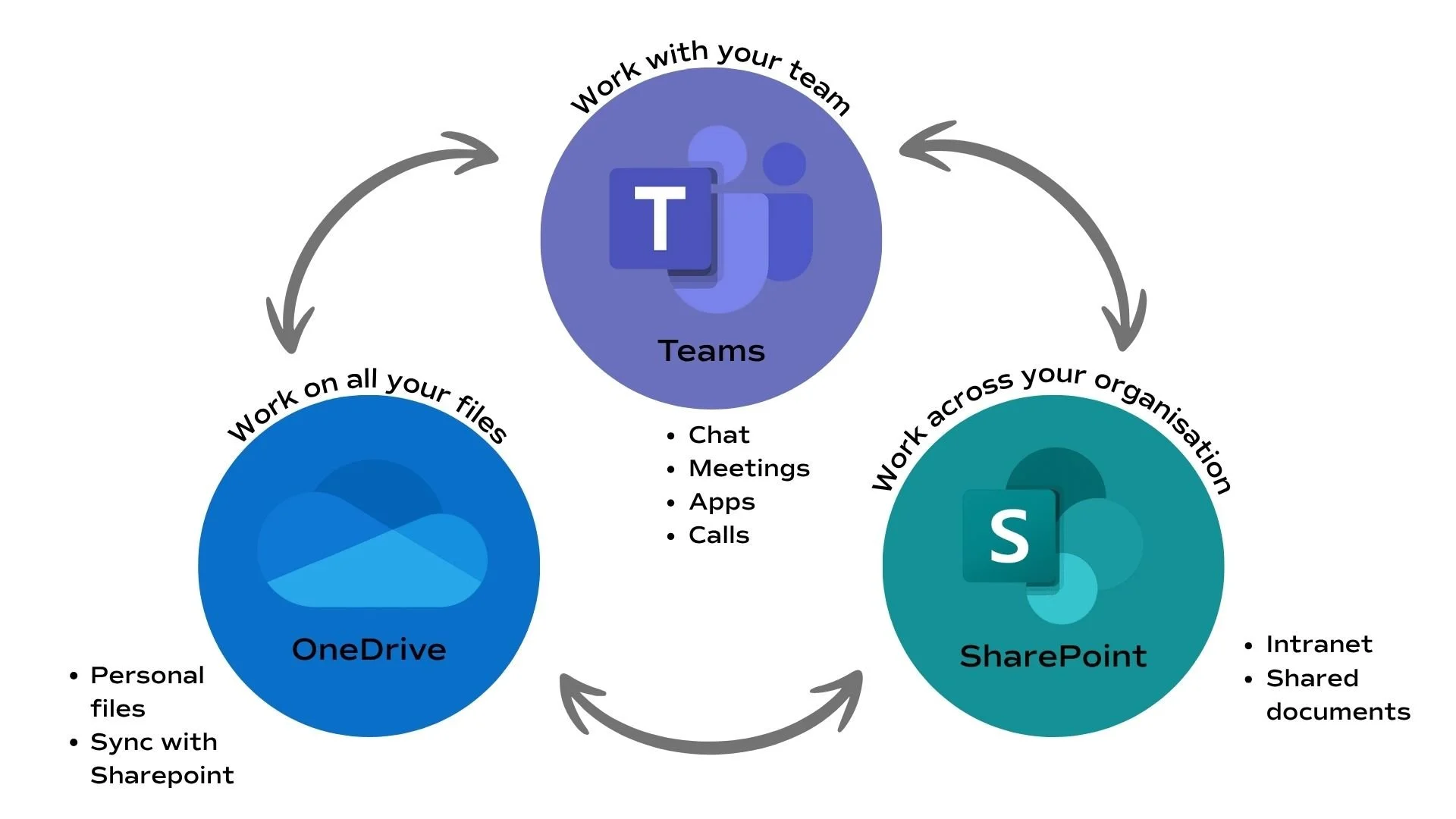SharePoint vs Teams vs OneDrive: What’s the difference and how do they work together?
In the Microsoft 365 ecosystem, SharePoint, Teams and OneDrive are beneficial tools designed to make collaboration and file management easier. But knowing which one to use, and when, isn’t always obvious.
Each platform has a distinct role, and understanding their differences (and how they integrate) can help you collaboration more effectively, stay organised and keep your information secure.
What are SharePoint, Teams, and OneDrive?
SharePoint
SharePoint is a cloud-based content and document management platform. It’s ideal for storing and managing information — things like policies, project documentation, or shared departmental files, with version control, workflows and permission settings. You can also use it to build intranets or internal project hubs.
Teams
Microsoft Teams is the communication hub of Microsoft 365. It brings together chat, video meetings, shared workspaces, and app integrations, all in one place. It's perfect for daily teamwork, where you can manage conversations, share documents, collaborate on files, and stay connected with your team in real time.
OneDrive
OneDrive is your personal cloud storage. It’s where you save files and documents. Think of it as your own digital filing cabinet, perfect for drafts, personal notes, and working documents that you may later move into a team space. OneDrive is also the tool used to sync SharePoint files locally to your device.
When to use each tool
Use SharePoint when you need to:
Manage documents across teams or departments
Store formal, long-term content like policies or templates
Create internal sites, intranets or project hubs
Control access with permissions
Use Teams when you want to:
Communicate day-to-day via chat and video calls
Collaborate on files within conversations
Coordinate quickly on short-term projects
Keep teamwork in an accessible space
Use OneDrive when you’re:
Working on drafts, working files or personal documents
Saving individual files
Managing content within your own workspace
Prefer to work locally instead of your browser
Where they overlap
While each tool has a distinct role, there’s a lot of integration happening behind the scenes.
File Storage:
Files shared in Teams sites and channels are stored in SharePoint.
Collaboration:
All three platforms allow multiple people to co-author Word, Excel, and PowerPoint files simultaneously.
Permissions:
Both SharePoint and OneDrive offer detailed file-sharing options, but the ownership model differs. SharePoint documents are owned by the team or department; OneDrive documents are owned by individuals.
How they integrate
Microsoft 365 is designed for these tools to work together:
Teams + SharePoint:
Every new Team automatically creates a linked SharePoint site. The files you share in your Teams workspace live in SharePoint libraries, not inside Teams itself.Teams + OneDrive:
Files shared in one-to-one conversations or group chats (outside of channels) are stored in the sender’s OneDrive and shared with recipients.SharePoint + OneDrive:
You can easily move or copy documents between your personal OneDrive and shared SharePoint libraries depending on who needs access.
Rather than thinking of SharePoint, Teams, and OneDrive as competing tools, it's better to view them as different parts of a connected ecosystem. Used together, they help teams work faster and more securely, whether you’re collaborating via chat, managing long-term documents, or keeping your personal files organised.
For a more detailed outline of each tool, check out this guide from Microsoft. Or, to chat about how these tools could work for your business, reach out to chat to our team.

